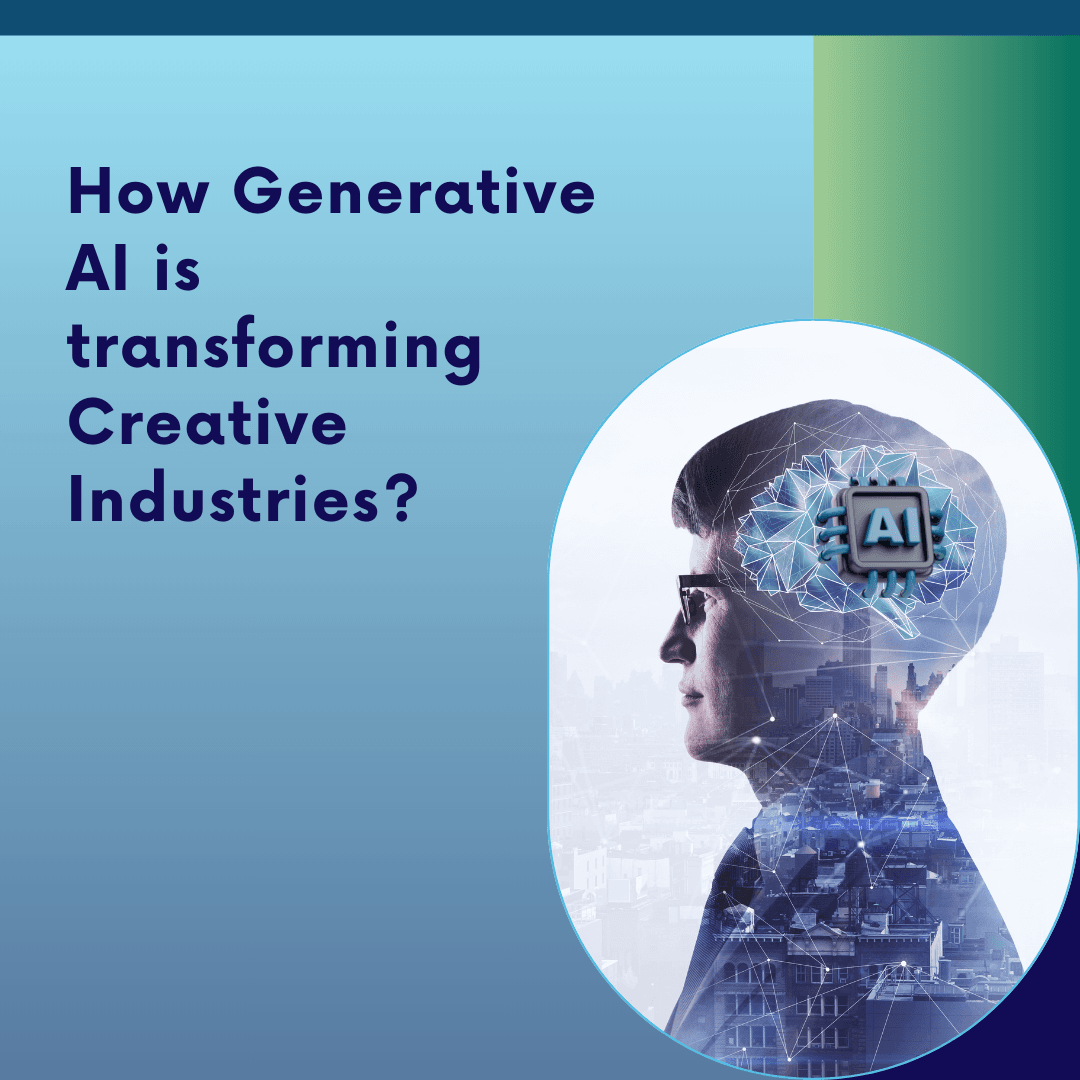
In the face of technological transformation, creativity is frequently cited as a characteristic that is exclusive to humans, resistant to technological disruption and essential to future. However, emergence of Generative AI apps has initiated an extensive debate within the creative industries towards the pros and cons of AI applications. Although AI is expected to open new horizons for the Creative Industries including Art & Design, Music Creation, Content Creation, Fashion and Gaming. This technological disruption, however, is witnessing ambivalent opinions from the end-users.
In some views, Generative AI holds the capacity to generate fresh and original content spans Creative industries. Unlike the conventional algorithms that works on predetermined patterns, Generative AI holds a remarkable ability to envision, innovate and produce. It holds the potential to supplement human effort, thereby enhancing productivity. Contradictory to these views, some industry experts believe that the rise of Generative Artificial Intelligence raises ethical concerns related to plagiarism, copyright infringement, and authenticity. Determining the original source of content and proving ownership become a major challenge.
Amidst this intense debate AI is all set to soar across these Creative Industries unfolding several opportunities in coming years. The following are the applications of Generative AI in various creative domains:
AI in Art & Design
One significant application of generative AI in art and design is in the creation of digital artworks, illustrations, and designs. These systems can analyze vast amounts of visual data, learn underlying patterns and styles, and then generate original artworks or assist artists in the creative process by providing suggestions and variations. During the 2020s, there was a notable trend in the development and adoption of text-to-image models, which can generate images based on textual prompts. This trend gained significant traction in 2021 when OpenAI introduced a groundbreaking text-to-image AI model called DALL-E, utilizing Transformer models akin to GPT-2 and GPT-3.
Music Industry
Technology and music have always been intrinsically connected. From the development of the synthesizer to generative AI songwriting tools like MelodyStudio and LyricStudio, technology has influenced sound and production practices in the music business. The use of generative AI in music marks the next step in technical advancement. The collaboration of human creativity and machine learning can create totally new genres, reinterpret old forms, and open doors to previously undiscovered aural realms.
Content creation
Generative AI is a form of artificial intelligence (AI) that produces content that is indistinguishable from human-created content. This can comprise text, photos, video, and audio. Generative AI can transform how content is generated. One of the most fascinating uses for generative AI is content production. Generative AI may be used to produce new and unique material, as well as to improve old content. For example, generative AI may be used to create news stories, product evaluations, and social media postings.
Benefits and Outcome of using AI:
- Content scaling and productivity
- Efficiency
- Output analysis
Fashion Industry
Foundational models and generative AI may be applied throughout the fashion value chain.
Merchandising and Products:
- Transform rough sketches, mood boards, and written descriptions into detailed and polished designs, such as intricate 3-D models of furniture and jewelry.
- Enhance the process of generating new product ideas and variations by collaborating with AI agents. These AI systems leverage data sources like previous product lines, inspirational visuals, and specific style cues to propose creative options and novel concepts.
- Enable the customization of products on a large scale for individual consumers. For instance, utilize AI algorithms to tailor products like eyeglasses to fit the unique facial topography of each customer, ensuring a personalized and optimized experience.
- Supply chain and logistics.
- Automate consumer segmentation at scale to tailor marketing initiatives.
Gaming industry
Generative AI has revolutionized the gaming industry by introducing dynamic and immersive experiences across various game genres. One of the key areas where generative AI shines is in procedural content generation, where algorithms create game content such as levels, environments, characters, and items algorithmically. This technology enables game developers to generate vast and diverse game worlds quickly, offering players unique experiences in each playthrough. Moreover, generative AI enhances player engagement through adaptive gameplay mechanisms, where AI systems dynamically adjust game difficulty, pacing, and challenges based on player behavior and skill levels.
Conclusion
Generative AI represents a remarkable advancement with profound implications across creative industries. While technology holds tremendous promise in revolutionizing creativity, innovation, and problem-solving, it also presents challenges related to ethical considerations, bias mitigation, and regulatory oversight. While navigating through the complex landscape of generative AI, it is essential to approach its development and deployment with careful consideration of its potential impact on society. By fostering collaboration, transparency, and responsible governance, industries can harness the transformative power of generative AI to address pressing societal challenges and unlock new opportunities for human advancement.

